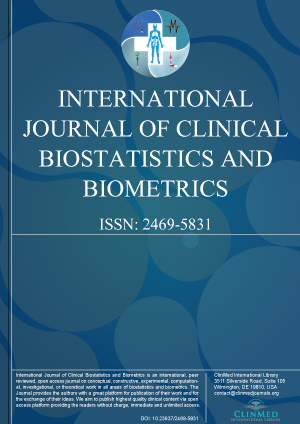Archive
Open Access DOI:10.23937/2469-5831/1510046
Time Based Prediction of Breast Cancer Tumor Recurrence Using Machine Learning
Siddharth Raj Gupta
Article Type: Original Article | First Published: May 06, 2022
An in-depth study using the database from GLOBOCAN, CDC, and WHO health repository highlights the lethality of breast cancer, taking thousands of lives each year. Therefore, timely prediction of cancer can help patients to consult the doctor on time. In the past various studies have successfully predicted the nature of the tumor to be benign or malignant and if the breast cancer tumor will reoccur or not. However, no time-based models have been studied previously. With the help of Machine Learni...
Article Formats
- Full Article
- XML
- EPub Reader
Open Access DOI:10.23937/2469-5831/1510045
Triple Negative Breast Cancer Prevalence in Indian Patients over a Decade: A Systematic Review
Suvobrata Sarkar and Murtaza Akhtar
Article Type: Systematic Review and Meta-analysis | First Published: January 12, 2022
Triple Negative Breast Cancer (TNBC) is an aggressive variant of breast cancer with penurious prognosis and limited therapeutic options. This subtype is characterised with higher incidence rate among the younger women, aggressive tumour behaviour, with early local recurrence and distant metastasis leading to poor outcomes. In India, majority of prevalence data of TNBC is hospital based from patient treated at tertiary care hospitals or centres ranging from 10% to 43% which is evident from the va...
Article Formats
- Full Article
- XML
- EPub Reader
Open Access DOI:10.23937/2469-5831/1510044
Tian Qiu, Zhi Ma, Yong Zhao, Wenling Wang, Huimin Jiang, Fengdi Wang, Yuelu Chen, Ting-Li Han, Yang Yang and Lianlian Wang
Article Type: Original Research | First Published: January 09, 2022
The increasing prevalence of infertility rate around the world has seriously impacted individuals, couples and families. This research identifies how infertility influences family functions in China under the newly introduced two-child policy. Specially, we compared family function between first-child infertile (FI) and second-child infertile (SI) women. This study included 572 infertile women of childbearing age, composed with 337 first-child infertile women and 235 second-child infertile women...
Article Formats
- Full Article
- XML
- EPub Reader

Volume 8
Issue 1
Issue 1
